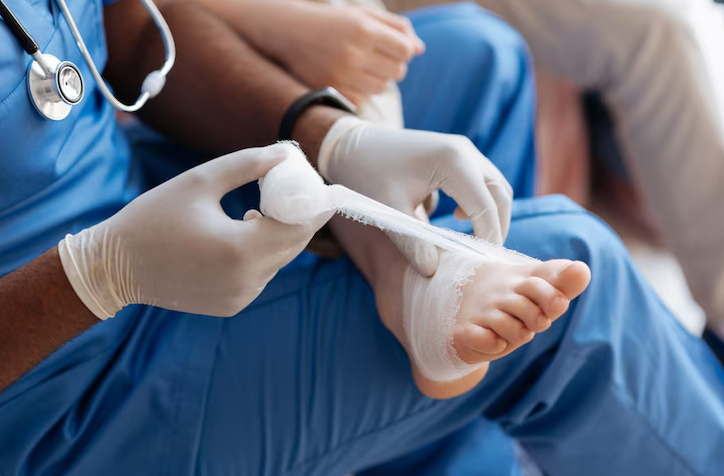
The discomfort of the foot can begin as a minor annoyance, but can eventually turn into an ongoing condition that restricts the ability to move around and impacts general well-being. For many, Heel Pain Treatment Lakeville can provide the relief required to restore flexibility and comfort. Knowing what causes heel discomfort, how modern podiatric treatment has changed and the process of recovery is crucial for anyone looking for long-lasting outcomes.
Understanding the Core Causes of Heel Pain
Heel pain is among the most frequent complaints in podiatry. It is often due to issues like Plantar Fasciitis Achilles tendinitis and structural problems. Stress that is repeated over the heel bone and its surrounding tissues can result in micro-tears, inflammation, and stiffness, making basic movements painful.
Lifestyle and lifestyle factors have a major impact. Standing for long periods, wearing poor shoes and weight gain, as well as intense sports like running can cause damage to the heel’s support structures. While some temporary solutions like ice packs or rest could help, an expert assessment is essential to determine the root of the issue and prevent repeat incidences.
Modern Approaches to Treating Heel Pain
The modern podiatric practice has advanced significantly beyond traditional rest and stretch recommendations. Modern diagnostic imaging technology allows doctors to determine the precise reason for heel pain, whether it’s inflammation of the tissue or bone spur formation and nerve pressure.
The treatment methods are now focused on a high level of precision with minimal interruption. Therapies such as shockwave treatments as well as ultrasound-guided injections and Regenerative medicine methods such as platelet rich plasma (PRP) can help patients recover quicker. These methods stimulate healing naturally, decrease inflammation, and help restore biomechanics. In the case of chronic or difficult cases, Heel Pain Treatment Lakeville incorporates surgical and non-invasive treatments to ensure stability for the long term and ease of use.
A Step Toward Recovery: The Healing Process
The healing process for heel pain is contingent upon the degree of problem and the method of treatment employed. The non-surgical treatment methods typically improve within a couple of weeks, while surgical treatments may require several weeks of rehab.
Physical therapy can play an essential role in rebuilding flexibility and strength in the affected region. The gentle stretching, exercises for balance, and gait adjustment can help reduce the chance of recurrence as well as improve mobility. The use of supportive shoes and customized orthotics also ensures that the there is a uniform distribution of pressure throughout the foot, decreasing the chance of injury from overuse to come up in the near future.
The Role of Preventive Foot Care
The prevention of heel discomfort before it gets chronic is among the most effective ways of treatment. Regular foot examinations, keeping an appropriate weight and ensuring that your footwear is cushioned will greatly decrease the chance of problems related to your heel.
Training for warm-up before physical activities and maintaining a steady posture over long intervals also help to maintain better feet. Through being proactive, people are able to maintain their comfort and performance without the need for frequent intervention. The experts in podiatry often suggest easy daily routines like stretching your calf muscles and foot massages to keep the tissue flexible and improve circulation.
How Technology Is Transforming Foot Health
The technological advances have revolutionized the way podiatrists manage heel discomfort. Pressure mapping technology as well as 3D foot scanning as well as AI-driven gait analyses let specialists understand the unique foot mechanics of each patient. These data help to design custom treatment plans that address the root cause, not only treating the symptoms.
Furthermore, regenerative therapies like Laser therapy or stem cells have become more readily available that offer faster recovery times and a less reliance on pain medication. The combination of medical precision and technology will result in better results with reduced downtime, allowing patients to return to their normal lives more easily and with confidence.
Long-Term Wellness and Lifestyle Integration
The process of healing from heel pain does not only mean immediate relief. It’s about integrating habits which will help you maintain your health for a long time. Regular low-impact workouts like cycling or swimming can aid in maintaining joint mobility without putting too much stress on the feet. Food choices that promote the health of tendon and bone such as calcium-rich and vitamin D-rich food items help to improve the recovery process and increase resilience.
Awareness of posture as well as ergonomic adjustments at work, and mindfulness in prolonged activities all can help reduce strain over the heels. When these practices are followed they not only help people recover from discomfort but also build the foundation for a lifetime of foot health and stability.
The Future of Pain-Free Mobility
The field of podiatric medicine is evolving with continuous research and innovations. Integration of biomechanics and regenerative science and AI-assisted diagnosis is leading to quicker, safer, and more effective treatment of heel-related conditions.
Thanks to the accuracy and individualization of modern therapies like the Heel Pain treatment Lakeville patients do not have to suffer long recovery times or constant discomfort. Instead they can look forward towards a future in which balance, mobility and comfort are restored by a combination of scientifically-backed treatment and advanced podiatric know-how.



Write a comment ...